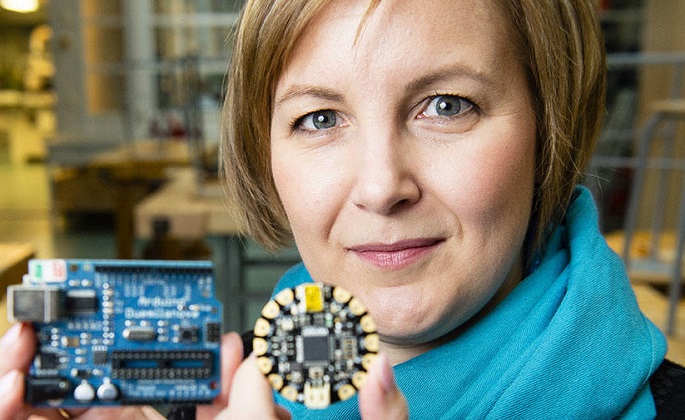Maker culture in Finn schools shows way to develop tech
Published : 21 May 2019, 01:02
Technology is what humans make of it, said Kaiju Kangas, an Assistant Professor of Technology Education, according to a press release issued by the University of Helsinki.
In Finland technology education is not a separate subject but a cross-curricular and multidisciplinary topic studied within various classes, for example in science or visual arts education. However, it is particularly closely linked with craft education.
Craft is a compulsory subject to all pupils in the first seven grades of comprehensive school, in addition to which it is an optional subject in the 8th and 9th grades. This provides good preconditions for using one’s hands, experimentation and building. It is precisely learning by doing that resides in the core of technology education.
Kaiju Kangas used the term ‘maker culture’: people come together to work, making use of the skills of all participants. They cross boundaries, with traditions and modern approaches going side by side. The maker culture revolves around children’s own ideas.
“Central to this is adopting a maker-oriented mindset; what can you do with what you know. My students, who are studying technology education in university, organised workshops for children, among other activities, where LED lights are used to create glowing Easter cards or dinosaurs with gleaming eyes. At the same time, the children learn about the basics of electricity and building electric circuits.”
Craft classrooms where pupils can, for example, sew or do wood work have been a staple of Finnish schools already for 150 years. In recent years, they have been equipped with digital fabrication technologies, such as 3D-printers and laser cutters. Kangas dreams about having a space dedicated to creative activities as the heart of each Finnish school. Facilities that encourage diverse activities can be used for designing and making various physical or digital artefacts, playing games or just hanging with your friends.
“Learning by doing has been a topic of discourse for more than a century now. What is new to this era is the ease that new technology brings. The collision of digital and material things engenders new opportunities, and everything can be shared online,” Kangas said.
In addition to crafts, an established school subject, and appropriate facilities, Finland has two other assets in technology education. Firstly, crafts – and all other subjects – is taught by subject and class teachers who have a master’s degree in education.
Secondly, the Finnish school system is based on the strong autonomy of teachers. The national core curriculum for basic education provides a fairly flexible framework, within which professional teachers are able to personally plan how to organise their teaching, enabling the freedom and playfulness that are part and parcel of the maker world.
As regards technology education, the current situation in Finnish schools varies. Enthusiastic teachers can cover a lot of content relating to the subject matter in their teaching, but the range of skills and interest among teachers varies significantly. Today’s students at the University of Helsinki can choose to complete a study module in technology education worth 60 credits.
“It’s important to also develop the skills of teachers already practicing their profession,” Kangas noted.


